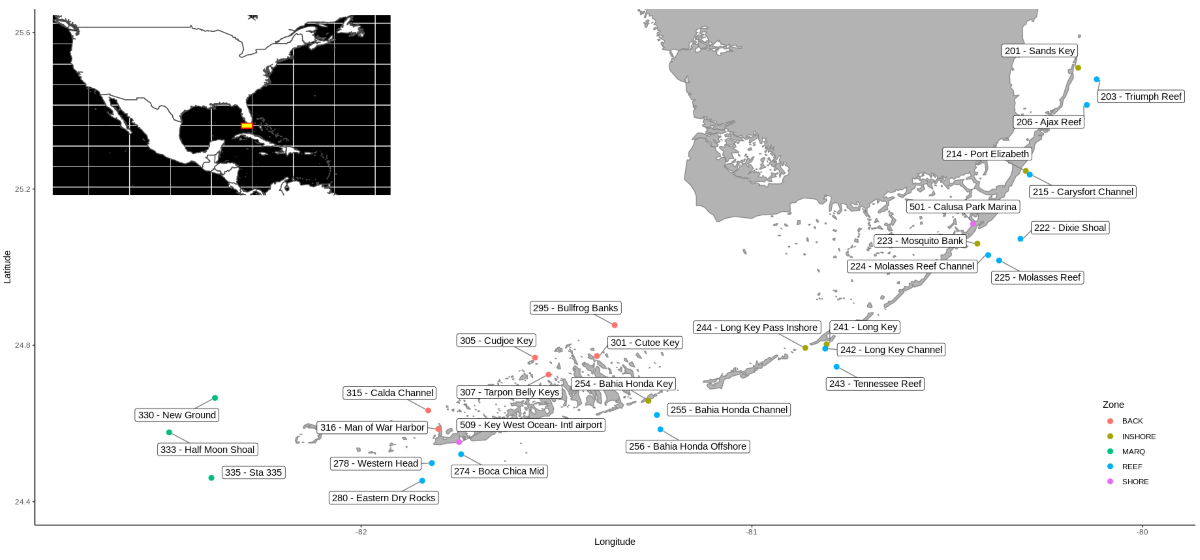The Florida Keys, a delicate archipelago of sub-tropical islands extending from the south-eastern tip of Florida, host the vast majority of the only coral barrier reef in the continental United States. Stony Coral Tissue Loss Disease (SCTLD), which was first detected near Virginia Key in 2014, has spread throughout the Florida Reef Tract and to reefs throughout the Caribbean, af-fecting nearly all reef-building corals. Molecular studies of SCTLD have identified opportunistic pathogens associated with the disease, but so far no single pathogen can be clearly pinpointed as its cause. One focus of recent research has been the surrounding environment of the corals, coined the 'coral ecosphere'. Abiotic and microbial components of the coral ecosphere are pivot-al for understanding the health of a reef, and could play an important role in SCTLD in Florida. In this study, we analyzed microbial community structure and abiotic factors that can impact coral (and human) health. Both, bacterial and eukaryotic community structure were significantly linked with variations in temperature, dissolved oxygen and total organic carbon values. High abundances of copiotrophic bacteria as well as several potentially harmful microbes, including coral pathogens, fish parasites, and taxa that have been previously associated with Red Tide and shellfish poisoning, were present in our datasets and can have a pivotal impact on coral health in this ecosystem.

